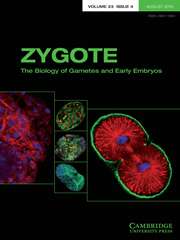Article contents
The role of microRNAs in the regulation of critical genes and signalling pathways that determine endometrial receptivity
Published online by Cambridge University Press: 18 September 2024
Summary
Endometrial receptivity is the ability of the endometrium to accept embryos. Thus, endometrial receptivity dysfunction is an important factor leading to embryo implantation failure. A good endometrial receptivity provides a suitable environment for embryo implantation, improving the embryo implantation rate. The “implantation window” stage, or the receptive stage of the endometrium, is regulated by various hormones, genes, proteins and cytokines, among which microRNAs (miRNAs) and their target genes have a regulatory effect on endometrial receptivity. This review outlines the relationship between endometrial receptivity and pregnancy, the mRNAs and related signalling pathways that regulate endometrial receptivity, and the regulatory role of miRNA in endometrial receptivity, providing a deeper understanding of the regulatory mechanisms of miRNA on endometrial receptivity in humans and animals and reference for the endometrial receptivity-related research.
- Type
- Review Article
- Information
- Copyright
- © The Author(s), 2024. Published by Cambridge University Press
References
- 1
- Cited by



